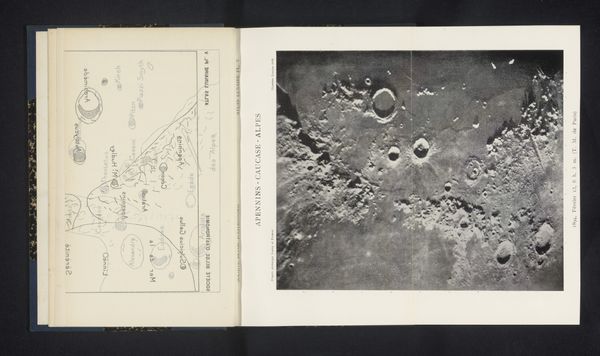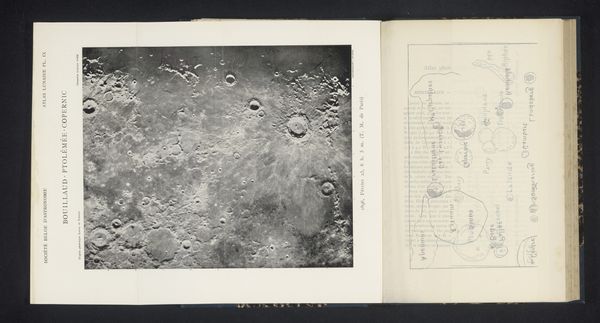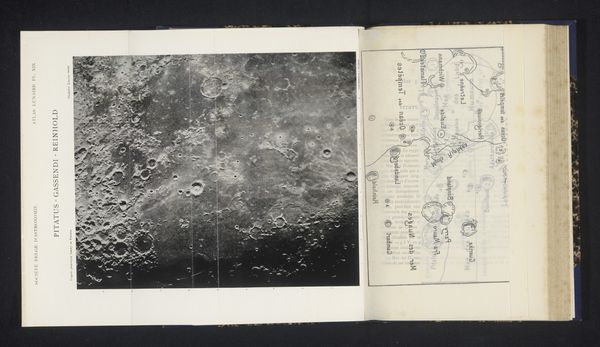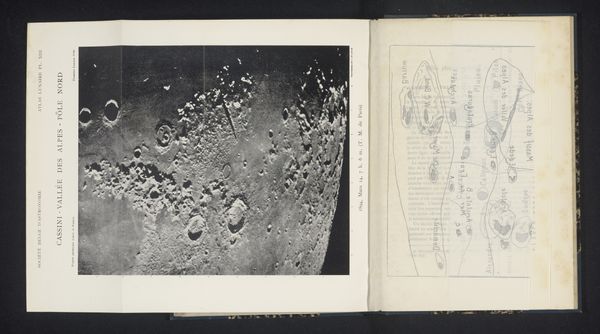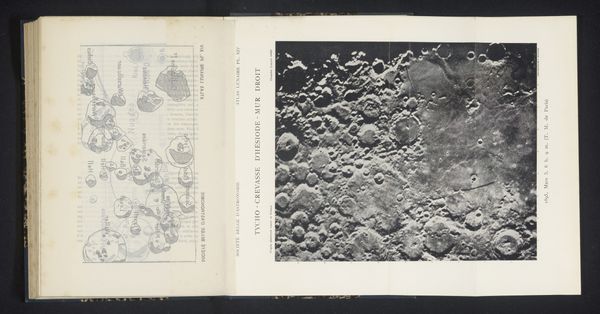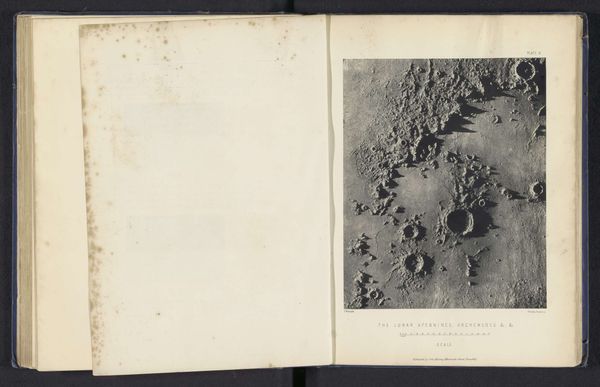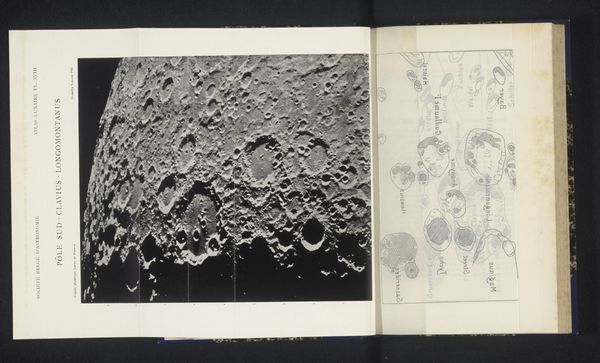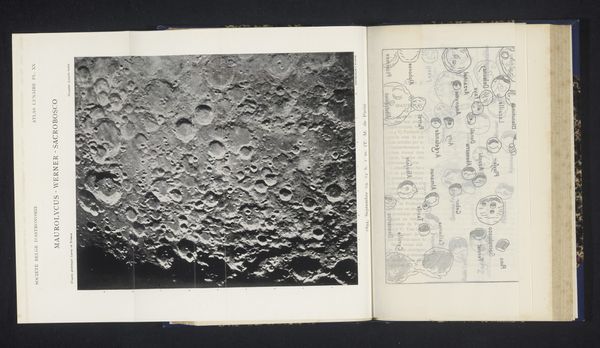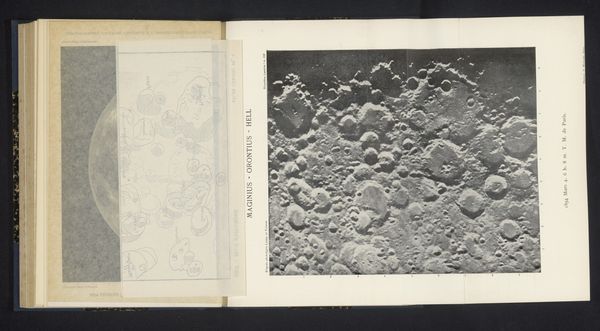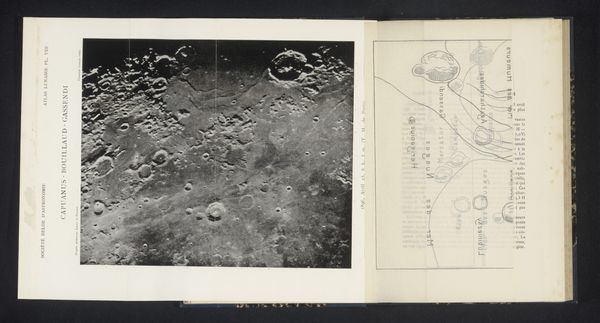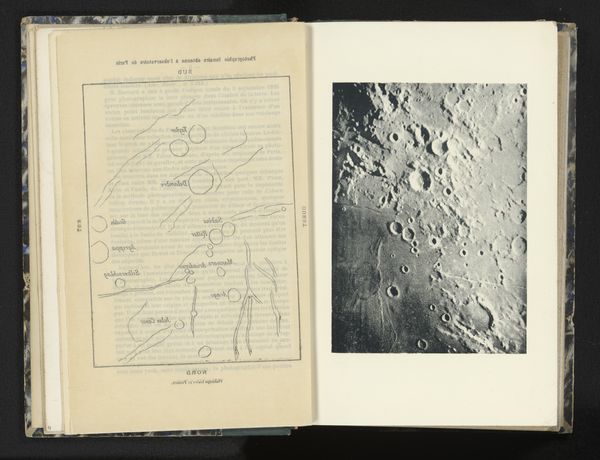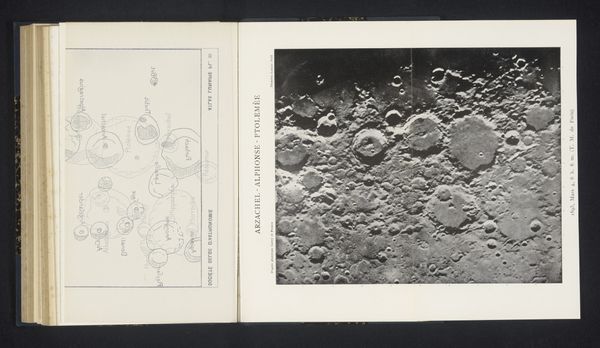
lithograph, print, photography
#
aged paper
#
script typography
#
lithograph
# print
#
typeface
#
hand drawn type
#
landscape
#
photography
#
hand-drawn typeface
#
fading type
#
ancient-mediterranean
#
stylized text
#
thick font
#
white font
#
handwritten font
Dimensions: height 231 mm, width 193 mm
Copyright: Rijks Museum: Open Domain
Editor: So this is "Kraters op de maan" (Craters on the Moon) by Loewy and Puiseux, created sometime before 1900. It's a lithograph print, resembling a photograph of the lunar surface. It really gives a sense of scientific exploration. How do you interpret this work in its historical context? Curator: This image reveals a fascinating intersection of science, art, and burgeoning public interest in the cosmos. Think about the late 19th century; astronomy was becoming increasingly accessible to a broader audience, and photography was revolutionizing visual documentation. How do you think images like this shaped the public’s understanding, or perhaps even perception, of scientific progress? Editor: Well, I'd imagine that before accurate photographs, people's image of the moon would be very imaginative, much more romanticised. So this brings in a new, perhaps colder and more objective reality? Curator: Precisely! And who was able to produce or consume images like this? It's a reflection of specific class interests and power dynamics. The ability to produce such a detailed image and then disseminate it through print speaks volumes about scientific institutions and the flow of information during that era. Note also the landscape style, associating scientific imagery with artistic conventions. What does that signify? Editor: Hmm, I hadn't thought about it that way! So the way the print is presented – like a landscape – perhaps gives the image an artistic quality and an implicit message about exploration into unknown, almost alien landscapes? Curator: Exactly. And where was this knowledge being generated, and for whom? We must critically consider the institutions and power structures that made this image, and others like it, possible. Editor: This has certainly shifted my perception; I'm no longer just seeing a historical photo of the moon! Curator: Indeed. By situating art within broader historical and socio-political currents, we gain a much richer understanding of its meaning and impact. It makes you question, doesn’t it? Editor: It really does! Thanks for shedding a new light on things.
Comments
No comments
Be the first to comment and join the conversation on the ultimate creative platform.
